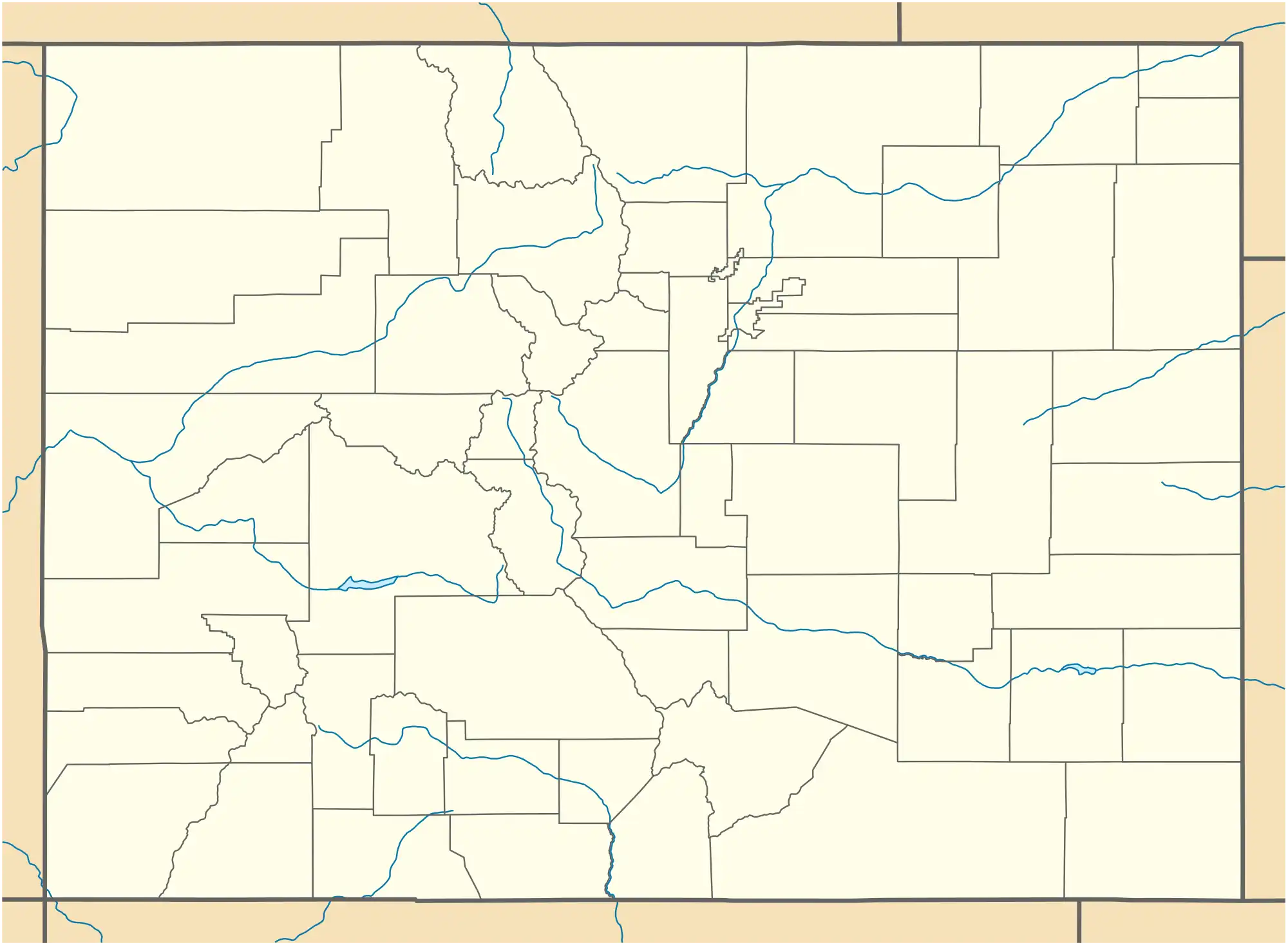Gunnison Tunnel
The Gunnison Tunnel is an irrigation tunnel constructed between 1905 and 1909[2] by the U.S. Bureau of Reclamation in Montrose County, Colorado.[3] The 5.8-mile-long (9.3 km) tunnel diverts water from the Gunnison River to the arid Uncompahgre Valley around Montrose, Colorado.

Gunnison Tunnel | |
  | |
| Location | Montrose County, Colorado, USA |
|---|---|
| Nearest city | Montrose, Colorado |
| Coordinates | 38.484022°N 107.743791°W |
| Area | 373.3 acres (1.511 km2) |
| Built | 1901 |
| Built by | U.S. Reclamation Service |
| NRHP reference No. | 79000616[1] |
| Added to NRHP | July 22, 1979 |
At the time of its completion, it was the longest irrigation tunnel in the world and quickly made the area around Montrose into profitable agricultural lands. In 1972, the tunnel was designated a National Historic Civil Engineering Landmark by the American Society of Civil Engineers (ASCE).[4]
The idea for a tunnel is credited to Frank Lauzon, a miner and prospector.[5] By the early 1890s he was farming in Montrose. Popular lore is that idea came to him in a dream that the waters of the Gunnison River should be brought to the valley.[5] In the late 1890s, the campaign for the tunnel was led by Omer Madison Kem. National funding was approved in 1902.
As construction was undertaken, two advances in technology made work safer and easier. Jackhammers fed by a compressor replaced hand-turned drill bits to set holes for blasting charges. Dynamite replaced black powder for blasting. By 1906 shifts of workers up to 30 at a time worked in the tunnel.[5]
The tunnel opened in 1909 to much fanfare with a dedication ceremony attended by President William Howard Taft.
It was listed on the National Register of Historic Places in 1979.[1][6]
The tunnel is 5.8 miles (9.3 km) long and is 11 by 12 feet (3.4 m × 3.7 m) in cross-section, with square corners at the bottom and an arched roof. It drops about 40 feet (12 m) over its length. At the deepest, it is about 2,200 feet (670 m) beneath the surface of Vernal Mesa.[6]
See also
References
- "National Register Information System". National Register of Historic Places. National Park Service. July 9, 2010.
- Page, Arthur W. (August 1907). "Running A River Through A Mountain: The Six-Mile Gunnison Tunnel". The World's Work: A History of Our Time. XIV: 9322–9330. Retrieved 2009-07-10. Includes construction photos.
- "Project History - Uncompahgre Project". U.S. Bureau of Reclamation.
- "Engineers Designate Gunnison Tunnel Historic Landmark". The Daily Sentinel. Grand Junction, Colorado. June 4, 1972. p. 18.
- "East Portal & the Gunnison Tunnel - Curecanti National Recreation Area (U.S. National Park Service)". www.nps.gov. Retrieved 2017-01-15.
 This article incorporates text from this source, which is in the public domain.
This article incorporates text from this source, which is in the public domain. - Steve MeCall (December 9, 1977). "National Register of Historic Places Inventory/Nomination: Gunnison Tunnel". National Park Service. Retrieved March 29, 2018. With seven photos.
Further reading
- "Uncompahgre Project". U.S. Bureau of Reclamation.
- Marsh, Barton W. (1905). The Uncompahgre Valley and The Gunnison Tunnel.
